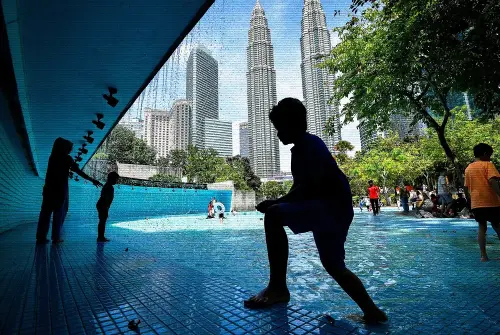
As Kuala Lumpur’s urban landscape evolves, the challenge remains: how can the city preserve its rich heritage while embracing modern growth? Think City Managing Director Datuk Hamdan Abdul Majeed addresses this issue, stressing the need to safeguard historical landmarks as part of the city’s revitalisation.
In a recent interview with Sinar Daily, he discussed the Kuala Lumpur Cultural Creative District initiative, which seeks to rejuvenate historic areas by blending heritage with modern innovation. This initiative is a key part of a broader vision to preserve the past while shaping the future.
SHAH ALAM - The Kuala Lumpur Cultural Creative District initiative is designed to revitalise the city's historic core, preserving its rich heritage while seamlessly integrating it into the future.
Think City Managing Director Datuk Hamdan Abdul Majeed emphasised the importance of protecting historical landmarks as vital assets in shaping a forward-looking capital that honours its past.
He stated that while Kuala Lumpur's rapid modernisation is exciting, the city's skyline—featuring impressive architecture—has been further enhanced by Merdeka 118, adding to its appeal.
"These will undoubtedly become new landmarks in the city, complemented by other buildings with remarkable architecture.
"However, we must also celebrate the assets inherited from our forefathers, as unlocking them will help us shape a future that respects both our past and present,” he said.
Hamdan described that the Think City Kuala Lumpur Cultural Creative District programme aims to rejuvenate the city’s historic core, an area that once thrived as a tin mining town before evolving into a colonial administrative hub and eventually the nation’s capital.
Over time, as economic activities and administrative functions shifted to suburbs and newer business districts like the Golden Triangle, Tun Razak Exchange (TRX) and KLCC, the inner city experienced stagnation, decay and neglect.
“The identity of a place is a composite of its people, built environment, nature and cultural heritage. Together, these elements create the spirit of a place,” he said.
In today’s competitive urban landscape, cities constantly strive to stand out. While skyscrapers and modern infrastructure can be built, a city's true distinction lies in its unique identity.
“How do we set ourselves apart from global hubs like Dubai, Hong Kong, or Singapore?” he asked.
Hamdan pointed to cities like Barcelona, Paris and New York as examples of how preserving historical landmarks and integrating them into modern spaces has contributed to their success.
The government’s revitalisation efforts aim to transform downtown Kuala Lumpur into a vibrant hub, blending heritage preservation with modern development.
This initiative seeks to make the city a desirable destination for living, working, and tourism, balancing cultural richness, historical charm and innovation.
Hamdan recalled how, a decade ago, downtown Kuala Lumpur was perceived as stagnant and neglected, with locals disconnected while its spaces were largely repurposed by migrant communities.
Recognising the need for change, efforts supported by Yayasan Khazanah and the Finance Ministry were initiated to revitalise the area.
Today, while some signs of decay remain, the city’s inner core has regained vibrancy, paving the way for further development over the next three to five years.
Key initiatives, including the Kuala Lumpur Cultural and Creative District Strategic Master Plan—incorporated into the Structure Plan 2040—focus on cultural heritage and natural assets.
Historic buildings, century-old layouts and iconic gardens create a unique blend of culture and nature, guiding transformation through identified catalyst zones.
“We believe that downtown Kuala Lumpur is the beacon of hope or the crown jewel that will strengthen Kuala Lumpur as a city-region, complementing existing attractions like the Kuala Lumpur City Centre, Menara Merdeka 118 and TRX.
"Ultimately, this will offer a deeper experience for visitors, making Kuala Lumpur a world-class city that people not only want to visit but also call home,” he said.
Hamdan stated that Kuala Lumpur’s transformation mirrors Georgetown’s successful revival, which overcame decay and stagnation through collaboration between state and city governments.
From 2008 to today, Penang’s tourism skyrocketed from 3.5 million to over 13 million annual visitors, driven by infrastructure investments and economic growth.
Georgetown’s success serves as a model for Kuala Lumpur, demonstrating how urban renewal can enhance a city's brand and economy.
